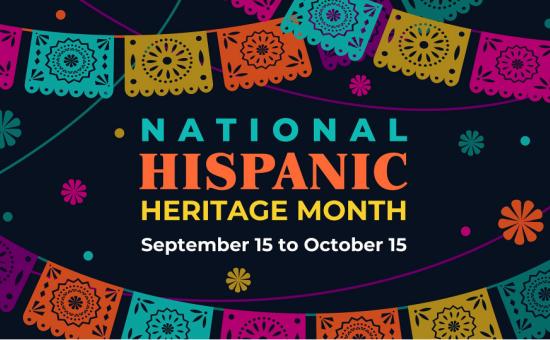Spanish teacher shares how she is incorporating Hispanic Heritage Month in lessons
09/29/2021
Dolka De Motte has been a Spanish teacher at Richmond High School for nearly three years. De Motte also teaches Spanish at Indiana University East. Her academic background includes science and business degrees as well as linguistics and teaching Spanish. She discovered that being a teacher is her passion because she can share her language and Hispanic heritage with students. She also loves to sing, dance, cook and learn new things.
In this blog, De Motte shares how she has been celebrating Hispanic Heritage Month in her classroom.
Q: How are you incorporating Hispanic Heritage Month into your lessons?
A: I am doing different things to include important facts about the Hispanic culture – music, athletes, artists, geography, movies, news – to represent the diversity of the Hispanic culture and the contribution of the Latino community in the U.S. I am also incorporating some social justice aspects concerning the Latino community.
Q: What tools or resources have you used to recognize and enhance Hispanic Heritage Month lessons?
A: I am using real stories to create connections with my students’ world – what they like and how they live, including their dreams, their struggles and their hobbies. I like to use real-life stories to understand the points of view of my students and to help my students break stereotypes and embrace diversity as a positive way to grow and be stronger as a country and as a community. I also encourage my students of Hispanic heritage to feel proud of their origins.
Q: Who are some of the persons of Hispanic heritage that you have featured this month? Why did you select these individuals?
A: We watched the movie McFarland, USA, a movie based on a true story of a group of young Mexican men who work on a farm and live in a small town without a future. However, things change for the better as they find inspiration when a coach recruits them for the school cross-country team. Hard work was their main tool to reach success. My students compared their lives with these young men and found inspiration as well as an understanding of more aspects of Hispanic culture such as quinceañeras, traditional food, music, etc. We did different activities related to the movie, including vocabulary and self-reflection.
The other activity we are currently working on is the story of Luis Grijalva, a young Guatemalan athlete who has been living in the U.S. since he was a 1-year-old. He is one of the top 12 best runners in the world, and he is a Deferred Action for Childhood Arrivals (DACA) student. He competed to represent Guatemala at the Summer Olympic Games in Tokyo. His story shows again the problem of the immigrants in the U.S. and how he never gives up on his dreams and is working hard to be successful in his life.
In this activity, we work on Spanish vocabulary. Students wrote the story of Luis, translated it to English and answered some questions about Luis. They then had to rewrite the story from Luis' perspective. The goal with this activity is to acquire more Spanish vocabulary and have a better understanding of what it is to be a DACA individual and the implications for the young students who are immigrants in this country.
Also, they are going to complete a Hispanic Webquest about any Hispanic cultural aspect they are interested in sharing with the class, including music, art, food, traditions, sports, geography and more. We are going to talk also about Hispanic myths and legends.
Q: Have your classroom conversations looked at Hispanic Heritage Month through a social justice lens?
A: We are going to talk more deeply about DACA. I asked them if they know what is to be a DACA individual, and I have a special activity for this. Students will answer the below questions after they watch a short video and read an article.
Activity for the Classroom
After you watch the video and read the article, please answer in Spanish or English the following questions. Please do not copy and paste information, do a serious reflection. If you just copy and paste and plagiarize, you will receive a zero. You can answer in English or Spanish.
Click here to have access to the article and video in English. If you want to read the information in Spanish please click here in Spanish.
- ¿Qué es el permiso DACA? What is the DACA permit?
- ¿Cuántos jóvenes estudiantes DACA hay actualmente en USA? How many young DACA students are there actually in the USA?
- ¿Cuál es la situación actual de los jóvenes DACA? What is the current situation for DACA youth?
- ¿Quién creó el programa DACA? Who created the DACA program?
- ¿Crees que el programa DACA beneficia a los estudiantes inmigrantes indocumentados? Do you think the DACA program benefits undocumented immigrant students?
- ¿Qué opinas del programa DACA? What is your opinion about the DACA program?
